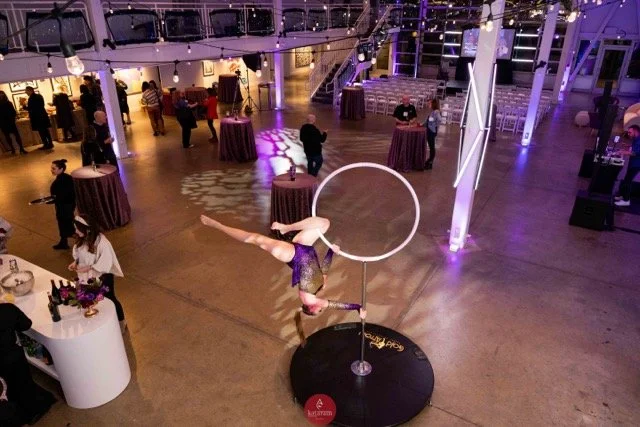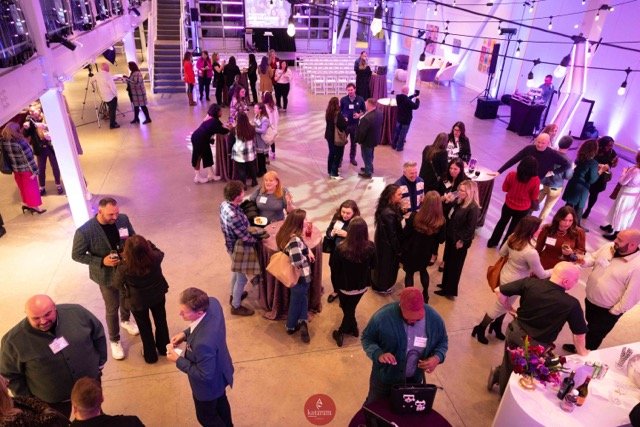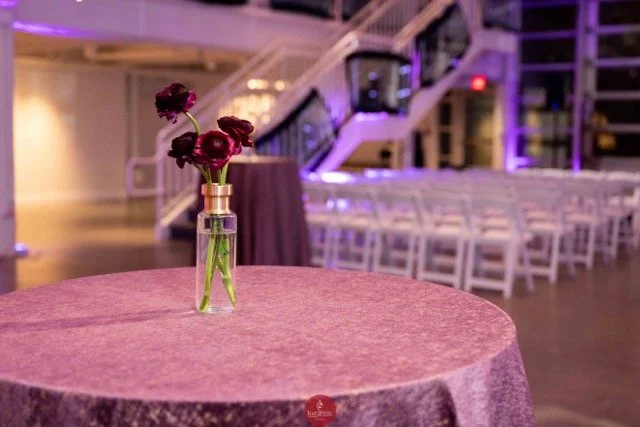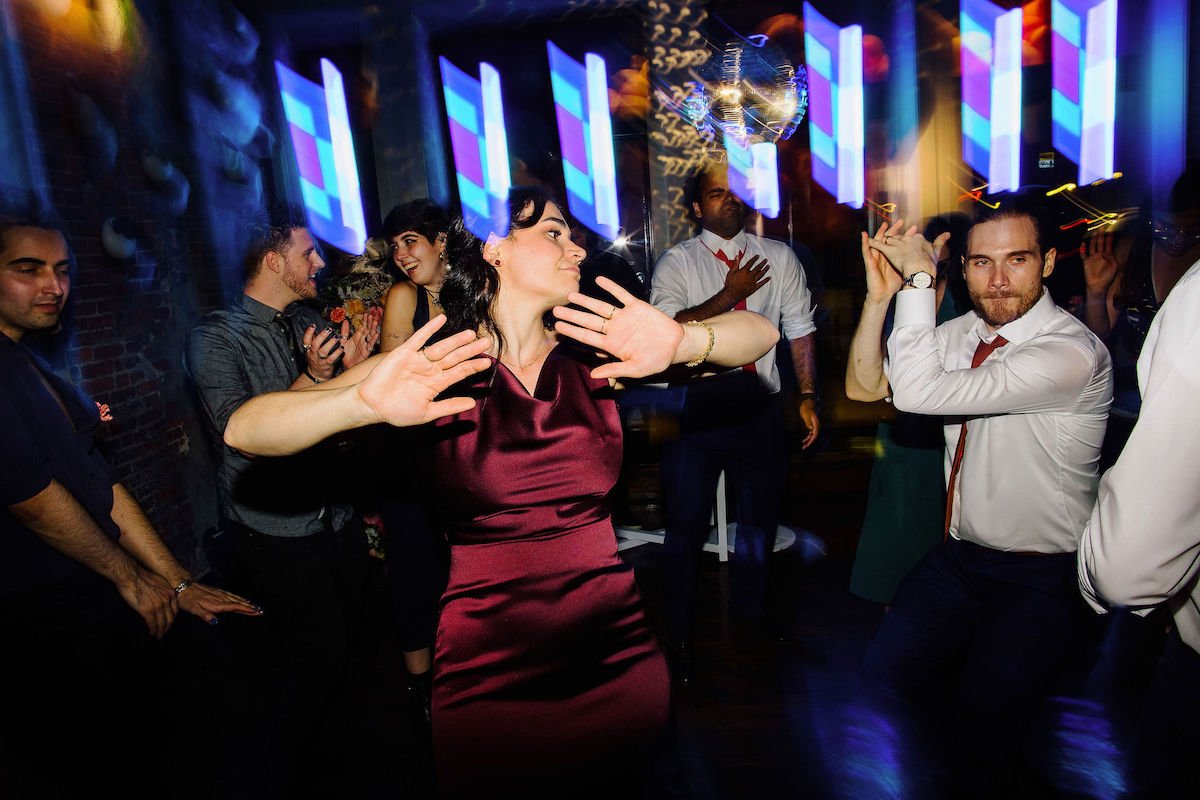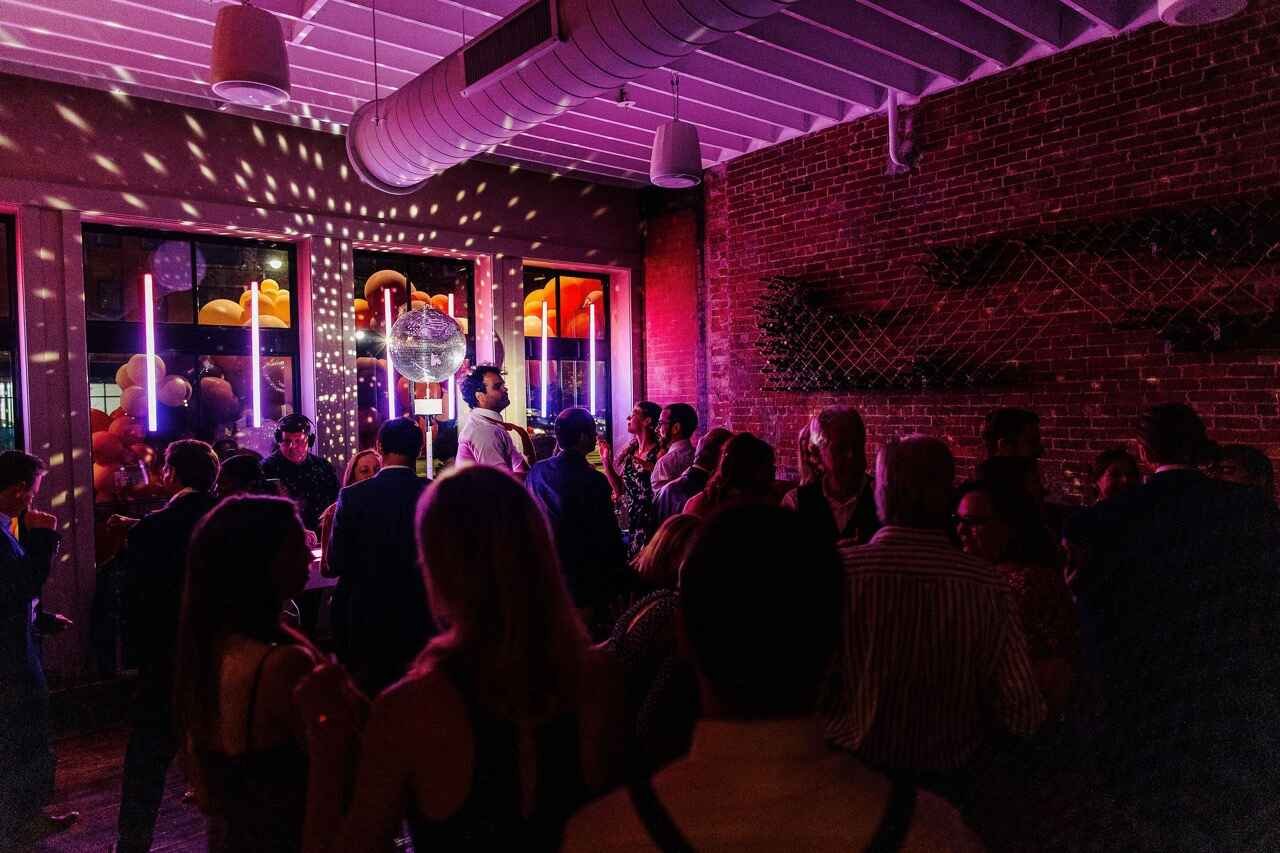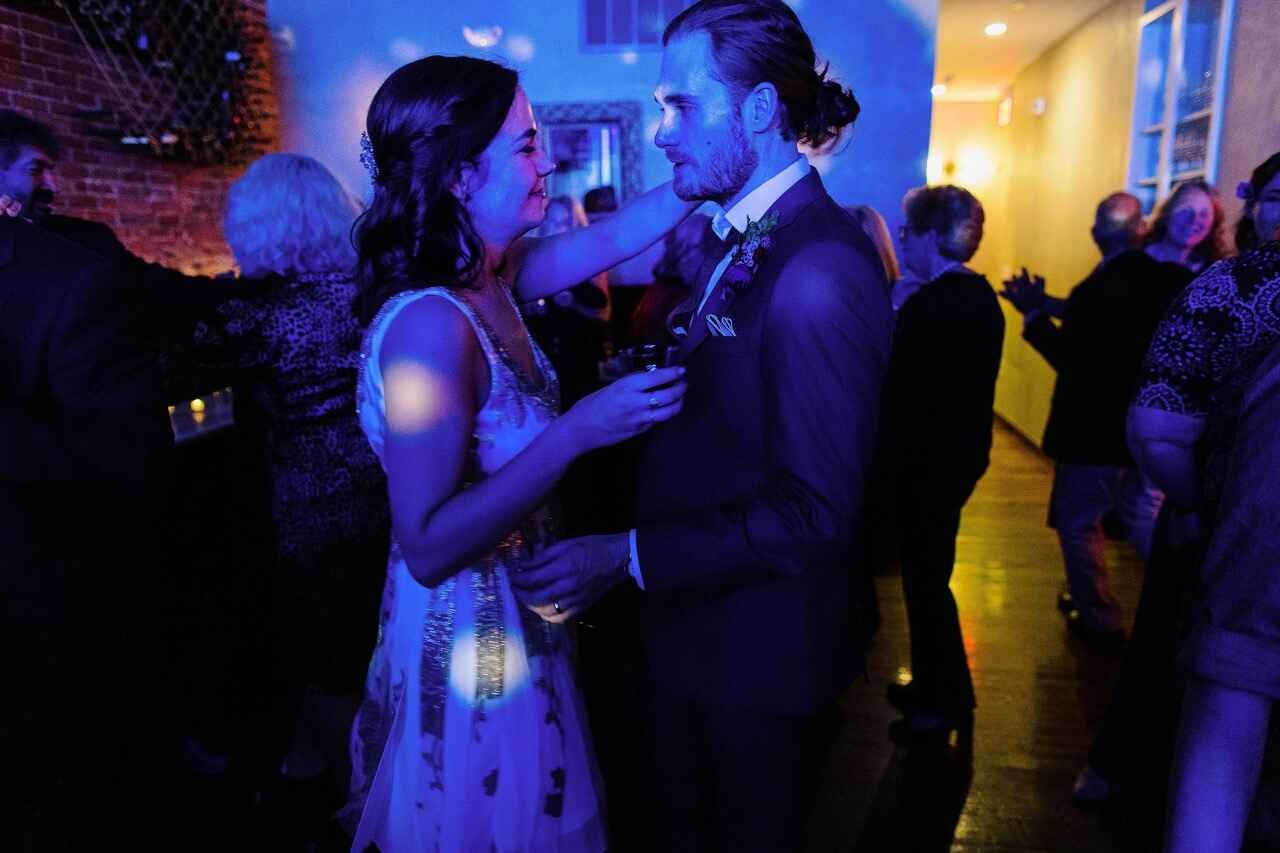The Ultimate Guide to Wedding Lighting
Wedding lighting is often treated as an afterthought. Wedding DJs almost always offer uplighting as an upgrade option. Few DJs give it much thought other than asking you what color you’d like and how many do you want?
In my time in the event industry and as a wedding DJ I've come to understand the impact lighting has in creating the atmosphere for any event. There is so much more to lighting than just putting a few uplights around a room! This guide is designed to take you through the essentials of wedding lighting.
At the end of this it’s my hope that you have a better understanding of how wedding lighting as you are approaching your wedding planning and can see how lighting can transform and enhance your wedding day
Key Takeaways:
Importance of Wedding Lighting: Lighting is crucial in setting the atmosphere for your wedding, going beyond basic illumination to enhance mood and ambiance.
Types of Wedding Lighting: Understanding the four main types—ambient, accent, task, and texture lighting—is key to planning your event's lighting scheme.
Color Theory: Utilizes warm and cool colors to evoke different emotions and atmospheres, playing a significant role in enhancing the mood and theme of the event.
Venue Assessment: The architecture and natural lighting of your venue influence your lighting needs, highlighting the importance of professional lighting in spaces with limitations.
Customized Lighting Plans: Personalizing your lighting plan according to your style and theme can transform your wedding space, with professionals able to integrate lighting with music for a cohesive experience.
Collaboration with Professionals: Working with a professional lighting team is essential for realizing your vision, as they bring technical expertise and creative design to the table.
Transformative Power of Lighting: Effective wedding lighting transcends basic functionality, acting as a creative tool to personalize and elevate your celebration.
Understanding Wedding Lighting Basics
1. Different Types of Lighting
Lighting plays a pivotal role in setting the stage for your celebration. If the lighting is not right it can really be a vibe killer, either too bright, or an unflattering light quality. Let's explore the four main types of lighting used in weddings:
Ambient Lighting: This is the overall light that fills a room, setting the base mood for your event. It includes lights that are built into your wedding venues such as chandeliers, or elements that are added such as string lights and uplighting.
Built in ambient lighting can both work with and against you. While some venues may provide built in uplighting or “dance lighting” it is often not very well thought out or smooth. This is why it's better to enlist a professional who will design an aesthetic that works with your overall vision.Accent Lighting: Accent lights are focused lights used to highlight specific features, such as the wedding cake, guest tables, or artwork. These include spotlights and pin-spot lighting. These lights are great to draw attention to details, while also drawing attention away from less flattering aspects of the venue.
Task Lighting: This practical lighting illuminates areas that require clear visibility, like the buffet, bar, or walkways. Task lighting is functional yet can be styled to complement the overall design of your wedding. This lighting can also be provided through the use of pin-spots or more traditional lights.
Texture Lighting: This is similar to accent lighting but with a twist. I will use a light that has the ability to use a gobo to create patterns or images on walls, floors or ceilings. A gobo is usually a piece of metal that has a pattern, logo or custom graphic. More advanced options include glass gobos which can add more complex and colorful textures or logos.
2. Color Theory in Lighting
Color plays a major role in setting the mood. Warm colors like reds, oranges, and yellows evoke a sense of coziness and intimacy.. Cool colors such as blues and purples create a more modern, elegant ambiance. I use color theory to enhance the mood and theme of my events.
During a wedding for example, we’ll focus on warmer tones for cocktail hour and dinner. Warm white tones do quite well here. Later in the evening once we hit the dance floor we add more color dynamics to the lighting.
3. Latest Trends in Wedding Lighting
As technology evolves, so do the trends in wedding lighting. Wireless and battery operated LED lights are at the forefront, offering flexibility in color and intensity while being energy efficient. Wireless technology allows for seamless installations, free from the clutter of cords.
Intelligent lighting control systems, capable of changing scenes and moods throughout the event, are increasingly popular for their dynamic capabilities. This level of control allows for more nuance to be added to the lighting and gradual and planned shifts of color and intensity to alter the mood of your wedding venue.
Planning Your Wedding Lighting
1. Assessing Your Venue
Your venue's architecture and natural lighting play a significant role in determining your lighting needs. Outdoor venues might require more lighting post-sunset. Indoor venues might have specific restrictions or opportunities for creative lighting solutions.
Ask if the lighting in your venue can be dimmed or if it is broken down into sections. If it can’t, it is even more reason to have professional lighting. That way it can take the place of the venue’s lighting and provide better ambiance.
2. Customizing Your Lighting Plan
Personalizing your lighting to reflect your style and theme is where the magic happens. For a whimsical touch, consider fairy lights or soft, dappled lighting. I prefer the use of fairy lights over bistro lights, they are not as bright and add a subtle glow to decor.
Bistro lights are often too bright and lack dimming control. Lack of dimming control on bistro lights will wash out your venue with light, and create a dance floor that is not as comfortable for your guests. There is a reason that nightclubs are dark!
For a contemporary look, geometric patterns or stark contrasts in lighting can be striking. Modern and industrial style venues really lend themselves to this style. Due to their unique designs and materials I find that we can often get a lot more creative with light and design choices in hotels and unique spaces.
3. Working with Professionals
Hiring a professional lighting team is crucial for turning your vision into reality. I understand the nuances of lighting, from the technical setup to artistic design, and am able to implement on both fronts. One of my main focuses is making sure that we can integrate the lighting with the music when we switch into the party part of the evening.
I want them to work together and complement each other in unique and dynamic ways, without being overpowering. During our planning process we’ll discuss how you want the space and your dance floor to feel.
The Role of Technology in Wedding Lighting
1. Advanced Lighting Technologies
My approach incorporates state-of-the-art technologies. Wireless LED lights offer flexibility in placement and design. It’s my goal to use completely wireless/battery operated lighting whenever possible. Our current stock is 90% battery operated. I’m moving towards having it all be charged via our own solar generated power.
There are a few different control technologies that we will use to control our lighting depending on the event's needs, one of which allows us to create highly detailed lights shows for each song, while the other allows us to create more dynamic environmental lighting.
These technologies not only enhance the aesthetic appeal but also adds a layer of sophistication to your event.
2. Interactive Lighting Features
Interactive lighting, which responds to music or movement, adds an element of surprise and delight. This can range from a dance floor that lights up in response to steps to ambient lighting that changes with the evening's tempo.
The ability to change the lighting to reflect the changes in energy in the room is one of the greatest benefits of good event lighting. We can change the lighting to reflect what is going on in the room, or we can use light to send subconscious cues to your guest that the energy is about to change, or that something will be happening soon. Making subtle changes from doors open, to grand entrance to first dance adds a bit of theater to your wedding!
Real-World Examples and Case Studies
Photos Courtesy of: Kataram Studios
For this event at Artist’s for Humanity in Boston I wanted to focus on purple hues to match the event host’s logo and brand. The built in bistro lights, while not a favorite light of mine, worked well here as they were dimmable and added the right amount of overall glow and warmth.
I used a combo of uplighting, pinspotting, texture projection and pixel tubes to create the overall look for this event.
Photos Courtesy of: Zac Wolf Photography
This wedding at SRV Boston is one of my all-time favorites for vibe and lighting. This was a 4 1 ⁄ 2 hour dance party (long by wedding standards), and the ability to morph the space through lighting definitely contributed to its success.
My couple had actually been at another event I was DJing and saw the disco ball. They requested to add it to their wedding and I think it helped to really create a cool dynamic between classic dance lighting and the more modern pixel tubes that were mounted on the windows.
Beyond Aesthetics – Safety and Logistics
1. Safety Considerations
I prioritize safety in every installation. We ensure all fixtures are securely mounted, wires are safely routed, and all lighting elements comply with safety standards. I also look to make sure that we can balance the need to bring down the overall brightness while still making sure pathways are lit for safety. I always make sure that we program emergency lighting as well, should the unlikely need arise, I can instantly turn all our lighting full on white.
2. Logistical Planning
My team and I will manage all aspects of lighting logistics, from setup to breakdown. I want to make sure we are addressing the needs of other vendors such as the venue and catering. Most importantly I want to work with your photo and video team to make sure that our light only helps them and makes their life easier. Better lighting makes better photos and videos, whether they are taken by pros or your iPhone!
Conclusion
Lighting is much more than mere illumination; it is the paintbrush that colors your wedding canvas. It has the power to transform a space, set the mood, and create an atmosphere that is uniquely yours. I invite you to reach out and discuss how we can work together to design an atmosphere through curated music and light.. Contact my team and I through our website to explore how we can bring your wedding lighting and music dreams to life, view our portfolio, and read more client reviews!


